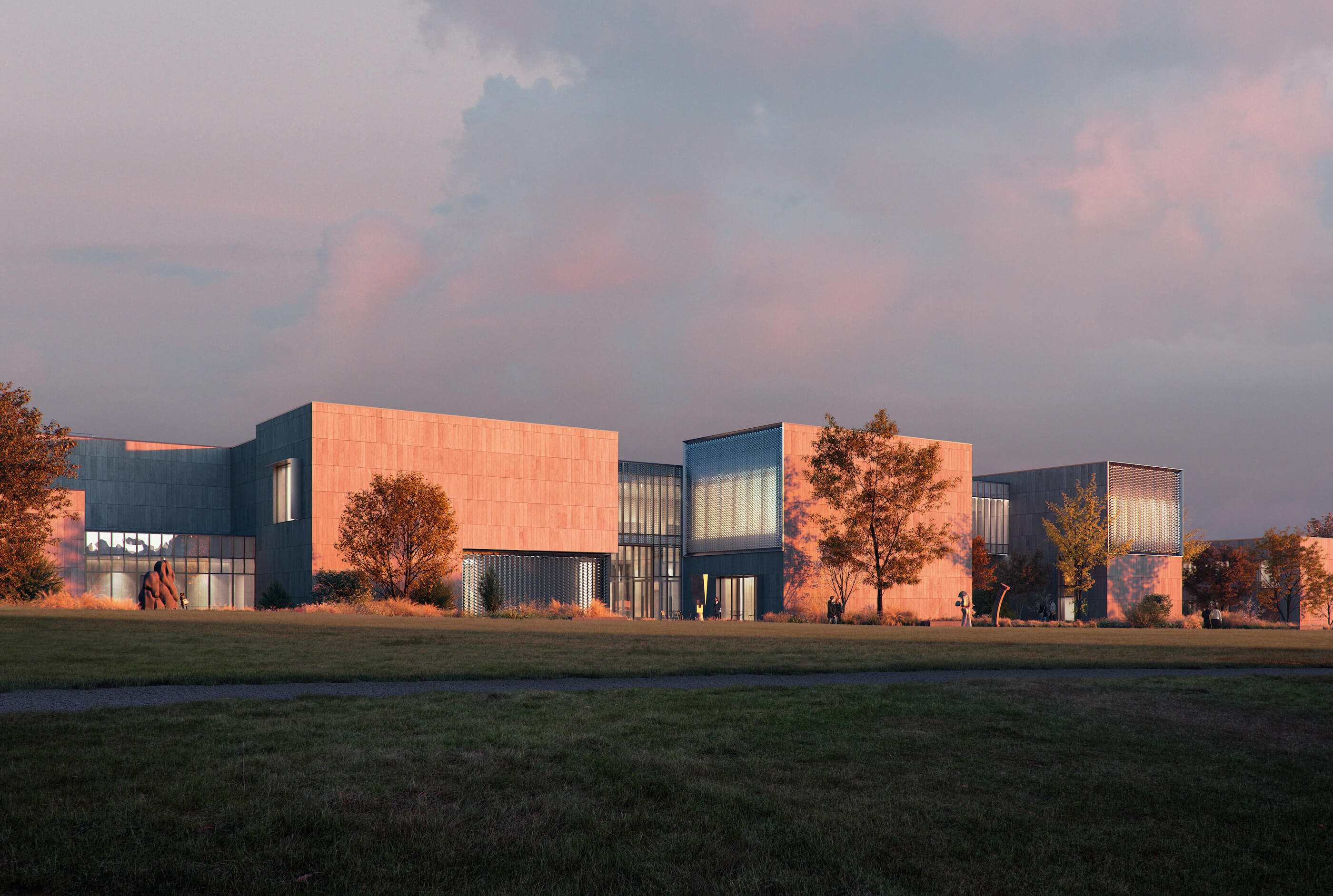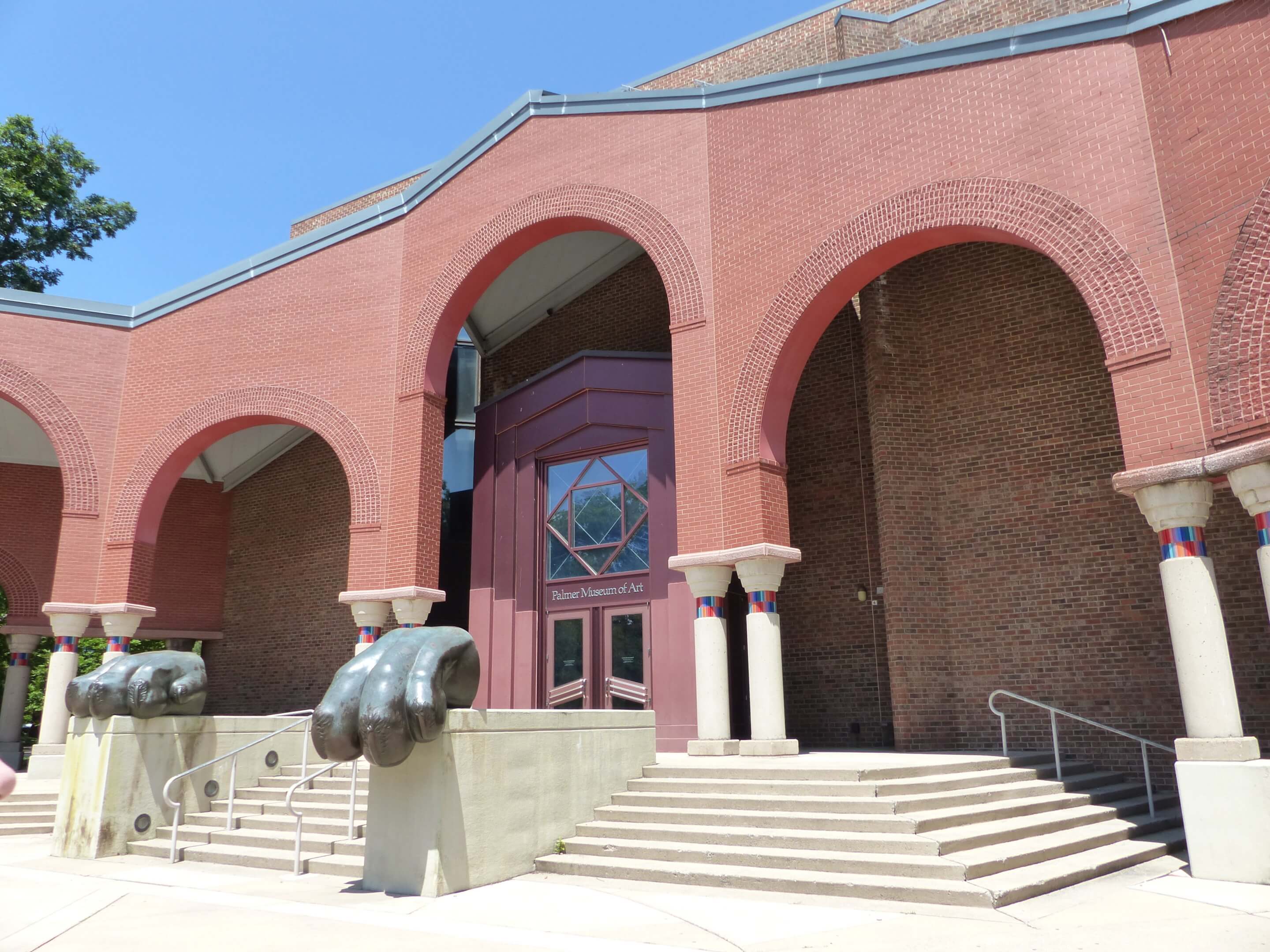Construction has officially kicked off on the 71,000-square-foot new home for Pennsylvania State University’s Palmer Museum of Art, a nearly 50-year-old State College institution that ranks as the largest art museum located between Philadelphia and Pittsburgh and the most significant academic art museum in the Keystone State. Allied Works, an architectural firm with studios in New York City and Portland, Oregon, was originally tapped by Penn State for the $85 million project in 2019. Final plans were later approved, but not without opposition, by the Penn State Board of Trustees in early May, clearing the way for the building’s groundbreaking at a site adjacent to the Arboretum at Penn State’s famed H.O. Smith Botanic Gardens that, until recently, was home to a parking lot.
The arboretum-integrated facility, comprised of a series of soaring pavilions clad in regional stone and organized into two central wings, is expected to open to visitors by fall 2023.
As is the case with many established museums and cultural institutions, the need for a new Palmer Museum of Art was necessitated by the fact that its collection of over 10,000 works is simply too large for its current home, an early 1970s structure expanded in 1993 to accommodate what was then a rapidly growing 3,500-piece collection. When Allied Works’ new building is complete, the footprint of the museum increase by 40 percent, allowing roughly 7-to-8 percent of the museum’s vast and diverse collection to be on public view at any one time versus the current 3-to-4 percent. In addition to a gallery-dedicated wing, the new building will also include dedicated spaces for educational programming and administrative offices for both the museum and the neighboring arboretum.

At the new Palm Museum of Art, “visitors will encounter an expanded and serene sequence of galleries, indoor and outdoor courtyards for social gathering, dynamic learning and creative space restorative framed views of the Arboretum grounds and an abundance of natural light,” explained a press release from Allied Works. “The partnership and proximity of the Museum and the Arboretum will afford exciting new joint programmatic initiatives, from shared spaces and public events to scholarly approaches and major outdoor installations.”
Other major museum projects executed by the Brad Cloepfil-led Allied Works include the Seattle Art Museum, the Museum of Arts and Design in New York City, Denver’s Clyfford Still Museum, the University of Michigan Museum of Art, and the Contemporary Art Museum St. Louis.
As for the free-admission museum’s considerable collection, it encompasses European and American paintings, sculptures, prints, photographs, drawings, and more. Highlights include 19th-century landscape portraits from members of the Hudson River School, Japanese woodblock prints, Old Masters paintings, contemporary studio ceramics, and, perhaps most famously, a sizable trove of Victorian-era hidden mother photographs.
The art museum at Penn State was first established in 1972 and housed within a three-story brick structure that was boxy, stark, and very much of its era. In 1993, the postmodernist Charles Moore completed a dramatic expansion (also very much of its era), which yield a new auditorium, substantial new gallery space, and a characteristically playful entrance plaza reminiscent of Moore’s earlier Piazza D’Italia in New Orleans, complete with Tuscan columns and a pair of massive brass lion paws by sculptor Paul Bowden that flank the main entrance. (The Penn State mascot is the Nittany Lion, named after the eastern mountain lions that once roamed the area.) That same year, the museum was renamed the Palmer Museum in honor of art collectors and longtime Penn State benefactors James and Barbara Palmer, whose largesse made the expansion possible.

As noted by Penn State, in addition to being too small to adequately display the museum’s fast-growing collection, the current building suffers from significant water damage and its outdated HVAC system is inadequate for rigorous, current-day art preservation standards. The new museum will feature state-of-the-art collection storage facilities and is targeting LEED certification.
In 2019, upon the formal approval of Allied Works as the architect of the new museum, Penn State announced that the Moore-revamped structure would be converted into a “student-focused space” and that a “task force has been assembled to determine exactly how the student space could be utilized.” The building will reportedly retain the Palmer name.
At the time, Penn State noted that while the Palmer name would also have a “significant presence” in the new museum, the honorifics wouldn’t necessarily extend to the naming of the building itself, a move “creating the opportunity for another donor to name the new University Art Museum with a lead gift.” (James Palmer died in 2001 while Barbara passed in January 2019.) However, in June of last year, the Penn State Board of Trustees voted to name the new museum in honor of the Palmers—as such, the Palmer Museum of Art will remain the Palmer Museum of Art in its new location. The current museum will remain open until the new building is completed.
“The Palmers began donating works of art to the Museum of Art at Penn State long before the official unveiling of the museum that bears their name in 1993,” said museum director Erin Coe in a 2020 announcement. “Over the years, gifts from their collection have immeasurably enriched our collections, particularly in American painting, now one of our greatest strengths. We are proud to carry the Palmer name and legacy forward into our future as a leader among academic art museums.”
To date, more than $20.2 million has been raised in support of the new Palmer Museum of Art through fundraising activities.
“The Palmer Museum of Art’s new building will provide countless robust and critically meaningful opportunities for Penn State students, and all visitors, to engage with the arts, design and the natural environment through an extraordinary work of 21st-century architecture,” said B. Stephen Carpenter II, dean of Penn State’s College of Arts and Architecture, in a statement.











